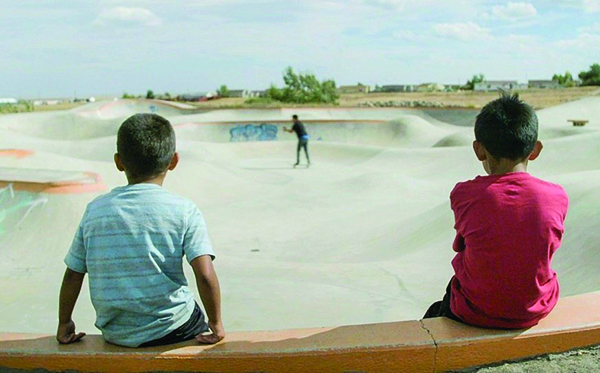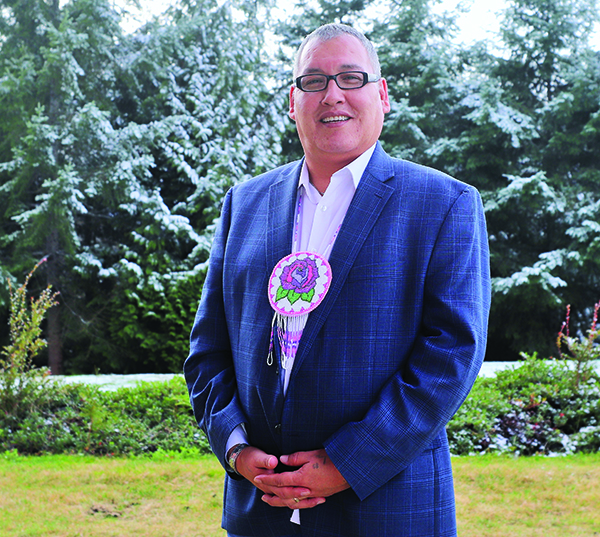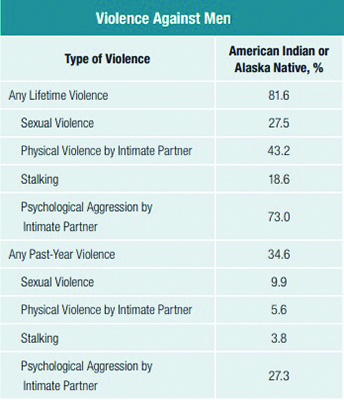
By Micheal Rios, Tulalip News
Many people continue to find it frightening when they realize just how widespread sexual abuse and violence is in our society. What was long a taboo subject and could only be discussed in whispers is now spoken aloud at rallies and public gatherings, and is turned to the loudest possible volume on social media.
According to Time Magazine, the groundbreaking anti-sexual assault and women’s empowerment movements #MeToo of 2017 and 2018’s Time’s Up upended the public conversation about women’s issues around the world, and elevated the global consciousness surrounding the obstacles women encounter in their daily lives, both personal and professional. The success of these two social movements continues to be the liberation of public discourse to include subjects and stories that were for far too long kept quiet.
Yet, as the terms sexual assault, sexual abuse, and sexual violence have permeated into national dialogue and every day conversations, there continues to be a veil of ignorance and denial to the fact that men and boys are victims as well. Often men are the neglected victims of all forms of sexual violence, including being abused as children.

Organized by Tulalip Tribes Children’s Advocacy Center and Northwest Indian Health Board, the Tulalip community was invited to a January 13th training hosted by Lenny Hayes to offer insight while shedding light on such a dark topic. The training’s title: A silent epidemic – sexual violence against men and boys.
Lenny, a citizen of the Sisseton-Wahpeton Oyate in northeastern South Dakota, is a therapy practitioner with extensive training in mental and chemical health issues that impact the Two-Spirit and Native community. He has travelled nationally and locally presenting on issues that include historical and intergenerational trauma, violence of all forms, child welfare issues, and the rarely discussed topic that is the impact of sexual violence on men and boys.
“There is a general misconception that men are immune from sexual violence, owing to gender stereotypes of women as delicate and therefore victims, while men are either the powerful protector or perpetrators of violence,” explained Lenny during the one-of-a-kind training seminar. “Traditional masculinity is inconsistent with the position of victimhood, leading many to believe a man simply cannot be a victim of sexual abuse.
“A boy or man sexually abused by a woman is often greeted by disbelief, denial, or trivializing. Society tells us that if any part of his experience felt good, then he was not abused. Or if he did not enjoy it, then he must be gay. While a boy or man sexually abused by another male is even more reluctant to come forward because of the stigma and extreme shame faced, both internally and externally, by admitting to being victimized.”
A new study funded by the National Institute of Justice (NIJ) and published in May 2016 looked at the extent and impact of sexual and intimate partner violence against Native American victims. The study clearly shows that Native American men and boys suffer violence at alarmingly high rates.
According to the NIJ study, more than 1.4 million Native American men have experienced violence in their lifetime. This includes:
- More than 1 in 4 (27.5%) who have experienced sexual violence
- Roughly 2 in 5 (43.2%) who have experienced physical violence by an intimate partner
- About 1 in 5 (18.6%) who have experienced stalking, and
- Nearly 3 in 4 (73%) who have experienced psychological aggression by an intimate partner
These are startling and heartbreaking statistics that were reviewed and discussed in great detail during the training. Illustrating the depth and scope of this rampant issue, especially in Native communities and on reservations, the PBS documentary Predator on the Reservation was shown. The film details a Frontline and Wall Street Journal investigation into the decades-long failure to stop an Indian Health Service (IHS) doctor accused of sexually abusing Native boys for years, and examines how he moved from reservation to reservation despite warnings.

Training participants, many of whom were professional advocates and social workers employed by community engagement entities throughout Snohomish County, were offered plenty of time to properly process and ask questions for further understanding about the heavy subject matter.
“You all took a huge first step just by being here today and being open to education about sexual violence against men and boys, the many mental health issues that impact them thereafter, and how healing is possible by breaking the silence,” offered Lenny at the conclusion of the training. “I hope that when you all leave here you remember that failure to address the suffering of male victims has profound consequences for the survivor, his family and his community. By breaking the silence and creating safe spaces for these stories to be told, healing can begin.”
Following the training, Tulalip tribal member and Community Health employee Rocio Hatch offered her thoughts. “In this community we don’t really talk about sexual abuse at all, let alone abuse towards men and boys,” she shared. “I was very uneducated in this topic and am just thankful to have participated here today. I’m excited to bring this knowledge back to my coworkers and, hopefully, start to have these necessary conversations and expand our outreach.”
Megan Boyer, lead family advocate for Legacy of Healing, added, “There’s an absolute need of education around the victimization of men and boys. It’s very prevalent, and in my job I’ve become aware of just how big an issue this is, but nobody talks about it. We all have a responsibility to let our boys and men know we believe them, it’s not their fault, and we appreciate them for having the strength to tell their story.”
Sexual violence is just as much a men’s issue as it is women’s, but the current structure for speaking about violence in any form often comes at the exclusion of men as victims. This constrained dialogue limits the opportunity for survivors to tell their stories and be included as critical resources and advocates. Fully recognizing male victims will not only bring much needed support and assistance, but create safe spaces for men to address the lifelong impacts of sexual violence as a whole, which benefits everyone.
Offered resources for further understanding:
To view the PBS film Predator on the Reservation documenting how an IHS doctor preyed on Native boys for decades, please visit:
https://www.pbs.org/wgbh/frontline/film/predator-on-the-reservation/
To view the NIJ-funded study showing that Native American women and men suffer violence at alarmingly high rates, please visit: